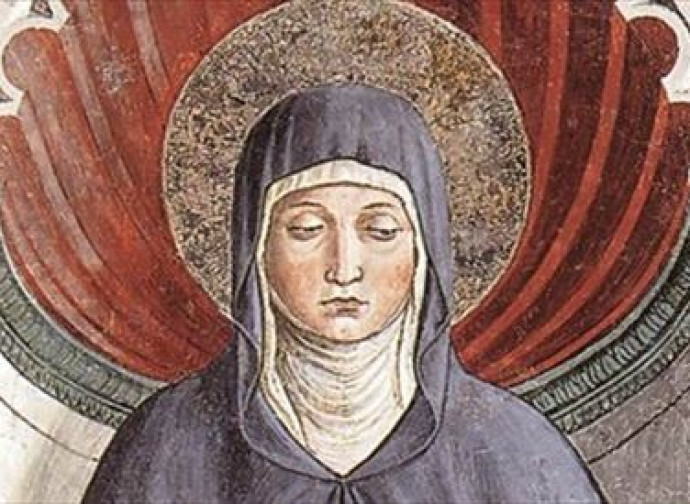Saint Monica
Saint Monica, that exemplary model of bride and mother, powerfully reminds us of the meaning of our life down here: the conquest of eternal salvation

Saint Monica (331-387), that exemplary model of bride and mother, powerfully reminds us of the meaning of our life down here: the conquest of eternal salvation, towards which she guided her loved ones with immeasurable love. She was in fact instrumental in the conversion of both her husband and her most famous son, St Augustine. “To her merits belong, as I believe, all that I am living”, the already converted Augustine would say of her in one of his dialogical works, Happiness, in which his mother herself intervenes several times speaking of God. But it is in the most famous writing of the Bishop of Hippo, the Confessions, that one can read the most beautiful portrait of the saint, interspersed with her son's long and troubled search for truth.
Monica was born into a Christian family and as a young woman she married Patritius, a pagan from Tagaste (present day Souk Ahras, in Algeria), who was affectionate but irascible. She tolerated his infidelities; she learned not to oppose his angry outbursts, which never degenerated into physical violence thanks to her wisdom in waiting for the right moment to explain herself to him. This exercise of patience and spousal sacrifice was accompanied by prayer for her husband's conversion. Patritius was baptized in 371 and underwent a real change; he died the following year. From their marriage she had three children: her eldest son Augustine (354-430), then Navigius and a daughter whose name is unknown though it is known that she became abbess in the female monastery of Hippo.
Already a widow, it was the dissolute life of Augustine that gave her the greatest sorrow. The future saint, during his studies of rhetoric in Carthage, had met a woman who became his concubine for 15 years and from whom he had a son, Adeodatus, in 372. Augustine's adhesion to Manichaeism induced his mother, in a spirit of loving and decisive correction, to no longer receive him at home, until a premonitory dream showed her that her son would return to the righteous path. Monica had the grace from God to understand which visions and inspirations came from Him and which did not. She also trusted in what the bishop of Tagaste had told her one day: “It is impossible for the son of so many tears to be lost”. She was constantly offering prayers and tears to God for the salvation of her son, who continued to hurt her, as when he left with his concubine and Adeodatus for Rome, leaving her under false pretences in Africa.
In the end, in 385, Monica also embarked and joined Augustine in Milan. Here, meanwhile, her son was slowly abandoning his mistakes thanks to listening to Saint Ambrose. Monica began to love the bishop of Milan “like an Angel of the Lord [...]. For my salvation she loved him so much”. And Ambrose, in turn, reciprocated, singing the praises of Monica every time he met Augustine. The latter still had a few more falls into carnal pleasures and some uncertainty, but with Ambrose's help, reading the words of Saint Paul, and his mother's continuous prayers, he finally welcomed Grace. On 25 April 387, during the Easter Vigil, Augustine was baptised by Ambrose, together with his friend Alipius (saint) and his son Adeodatus. The mission of Monica, who had taken care not only of her children “as if she were the mother of all”, was accomplished.
Just a few months later, in Ostia, after some conversations about heavenly goods, she said to Augustine: “Son, as far as I am concerned, nothing attracts me anymore in this life. What I am doing here, why I still remain here, I do not know: all my hopes in this world are fulfilled. Only one thing made me want to live a little longer: to see you as a Catholic Christian before dying. God has more than fulfilled my wish, because I see you have become His servant, shunning earthly happiness. What am I doing here?”. She soon contracted a serious fever. And after eight days of illness, on 27 August 387, at the age of 56, she was finally able to contemplate the face of He whom she had sought - and taught to seek - throughout her earthly pilgrimage.
Patroness of: married women, mothers, widows




